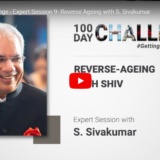Inclusive Agriculture

Food and Agriculture Organisation (FAO), as a part of the process to prepare their Country Programming Framework 2012-17, organised a Workshop on Indian Agriculture, today, at the Central Research Institute for Dryland Agriculture (CRIDA) in Hyderabad.
I was a panelist in the session on “greater inclusion of women and disadvantaged social groups, and marginalised areas”, along with Dr Suman Sahai of Gene Campaign and Dr Geetha Kutty of Kerala Agricultural University.
This is a summary of my remarks:
Before we can figure out “what we can do to include these people”, we need to understand “why they are excluded” and “how they are coping”…
There are multiple causes for exclusion and several ways in which people cope with the situation. So, the solutions also need to be varied, to be effective.
Based on the experiences from around the world, FAO may like to prepare a ‘Tool Kit’ to enable the practitioners easily analyse the context, and mix & match the solution themes, rather than starting with a zero base each time.
Here are the answers that came top of my mind, for each of these questions.
Q1: Why are women, disadvantaged social groups, and marginalised areas excluded?
I think they are locked-up in a vicious circle by some centripetal forces. Such forces include
- historical and cultural reasons (especially true for women, and socially disadvantaged groups)
- vested interests that benefit by locking these people in a cycle of dependency, after helping them out of a tricky situation (eg. informal money lenders in the villages)
- natural resource constraints and other risks inherent to agriculture (eg. water scarcity in rainfed areas, challenges of hilly areas, commodity price risk).
While the efforts of the Government succeeded only partially to date, the markets have not been interested in these people either as producers (because of no marketable surplus) or as consumers (because of low income). As a result, most of these people stay locked in a vicious circle.
Q2: How are they coping?
- Some are resigned to their fate, while some are satisfied with a low-level equilibrium
- some resort to violence and extremism to change the situation, while
- some aspire for a better future and rely on their entrepreneurial energies
Yet, a large majority are still stuck in a vicious circle!
Q4: What are the solution themes?
Logically, the only way this vicious circle can be broken is by applying sufficient centrifugal force. Sources of such force include
- disproportionate deployment of resources at strategic points (currently the Government spends are spread across several initiatives, as a result they are not able to break the vicious circle anywhere)
- orchestrating synchronised interventions at multiple points through a collaborative effort (markets get interested as they now see profits in raising incomes of the poor, instead of competing for a share of small wallets. eg ITC eChoupal ecosystem)
- collective action by the affected people themselves (eg Amul, SHGs supported by SERP in Andhra Pradesh)
Several activities form part of these solution themes, such as:
- capacity building of the groups before investing in physical assets
- expand income streams that put cash in the hands of the women (dairy, agarbatti making)
- evolve institutions for risk management (insurance for weather risk, futures & options for price risk)
- leverage technology (ICT, micro irrigation, drudgery reducing – not labour displacing – farm equipment suitable for women and other labour)










